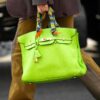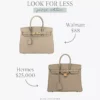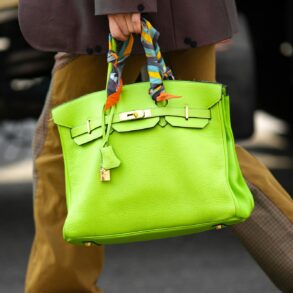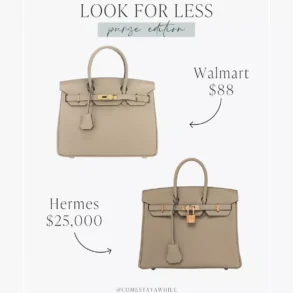
That old designer handbag tucked away in your grandmother’s closet might be more valuable than you think. The U.S. secondhand apparel market is experiencing a remarkable boom, with vintage luxury handbags at the forefront of this trend.
In 2023, the resale industry expanded at a rate seven times faster than the broader retail clothing market, according to ThredUp’s Annual Resale Report. Rare and sought-after pieces are fetching thousands of dollars, fueling a surge in demand for high-end, pre-owned handbags.
Value Meets Sustainability
So, what’s driving this unprecedented growth? Experts point to a combination of value and sustainability. ThredUp reports that 60% of consumers believe shopping secondhand offers the best value for their money. This shift in consumer behavior reflects a growing desire for quality investments that are both economically and environmentally conscious.
“As the market evolves, we’re witnessing a clear shift toward sustainability and smart investments,” says a spokesperson from Classy Leather Bags, a leading retailer in the luxury handbag market. “Consumers are no longer purchasing solely for fashion; they’re buying with the future in mind. A well-maintained luxury handbag isn’t just a style statement—it can also be a valuable asset.”
Economic Uncertainty Fuels Resale Boom
Economic factors are also playing a significant role. In times of uncertainty, consumers are more cautious with their spending, seeking ways to stretch their dollars without compromising on quality. The resale market offers an attractive solution, allowing shoppers to access premium brands at reduced prices.
Branded resale is on the rise as well, with 163 brands now offering their own resale shops—a 31% increase from the previous year. This trend underscores a growing recognition among both consumers and brands of the resale market’s potential.
Changing Motivations and Market Growth
The motivations behind secondhand purchases are evolving. In 2023, 38% of consumers reported shopping secondhand to afford higher-end brands, an increase of 11 percentage points from 2022. This indicates a shift toward more strategic buying habits, where consumers prioritize long-term value and sustainability over fast fashion.
According to projections by Statista, the U.S. secondhand luxury goods market is expected to grow to $3.3 billion by 2028. This burgeoning market presents a significant opportunity for savvy consumers and collectors alike.
Uncovering Hidden Treasures
As this trend continues to gain momentum, now might be the perfect time to sift through those forgotten closets and storage spaces. That vintage handbag gathering dust could be your ticket to a small fortune—and a step toward a more sustainable fashion future.
The rise of the secondhand luxury market not only offers financial benefits but also contributes to a more sustainable and environmentally friendly fashion industry. By choosing pre-owned luxury items, consumers are making choices that benefit both their wallets and the planet.
This post was originally published on this site be sure to check out more of their content.







